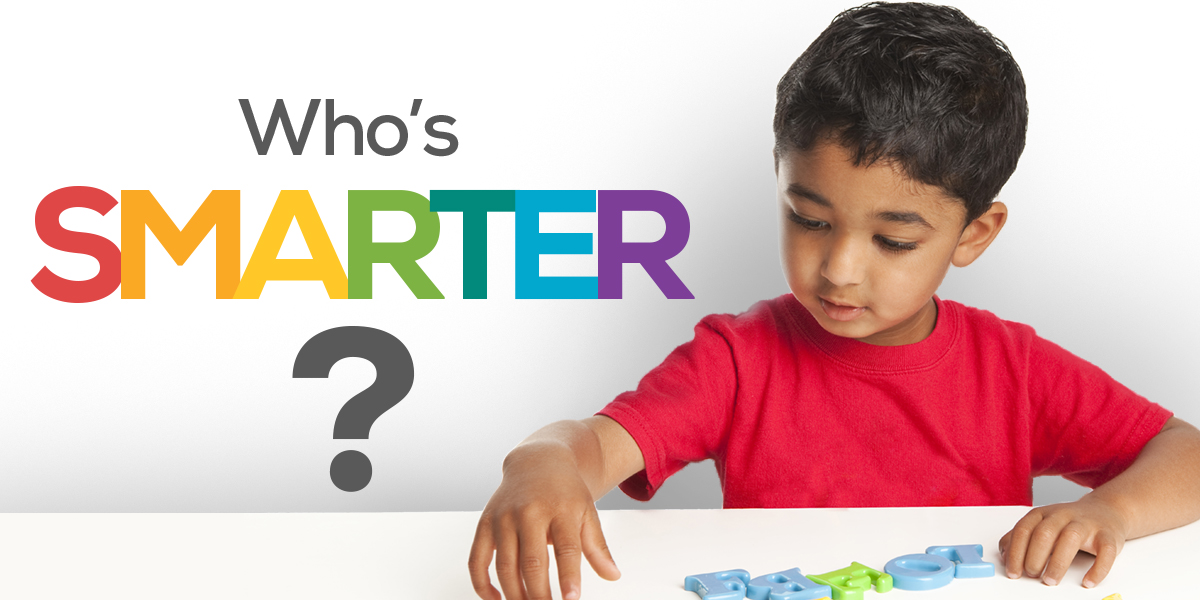“Instead of trying to produce a programme to simulate the adult mind, why not rather try to produce one which simulates the child’s?”
– Alan Turing, 1950

In thinking about machines, and their potential to ‘outsmart’ humans, it is necessary to reflect on how knowledge types are categorized. People who possess certain types of knowledge are considered ‘smarter’. This is definitely extended to subjects and disciplines that students pick in their undergraduate years. In India, students who are inclined towards the hard sciences and Mathematics are considered smarter than those who are interested in studying the social/human sciences such as Psychology or History. Such a mindset does not simply appear from thin air when one turns 15. We know by now that mindsets are a result of cultural conditioning, but it is interesting to note the subtle ways in which such mindsets continue to exist, in slightly muted yet very real ways.
A child who knows where all the states go on the Indian map, can name over ten world capitals, can recall all the prime ministers and freedom fighters, or has the ability to calculate without the use of the “10 in the head, 3 in the finger, after 10” approach, is considered smart. This child is then ‘groomed’ to be better than the other children. This competitive rearing, as if a child is a bull being reared for the Jallikattu, extends to non-academic practices as well, especially in today’s age of over-enthusiastic parenting.
Children are pitted against one another as early as only a few bare months into their birth – which child rolled over first, which child sat up straight first, and which child has the most number of pictures. The use of technology is not limited to just pictures, but also social media – there are active parenting communities that foster this aggressively competitive atmosphere, which is contrarily decked up with innocent pinks and blues to make the platform appear cheery and light-hearted.
Such associations of value, and even the whole worth of a child, with their ability to do ‘certain kinds of things’ which are regarded as ‘normal’ or ‘good’ among a group of competitive people (most definitely not the children themselves), fosters a hierarchy of knowledge – kinds of things that are smart, successful or bright, and other ‘softer’ skills.
At a very young age, children who are ‘different’ are made to fit into this dominant expectation of a potentially successful student. Children who creatively engage in games and sports are predominantly discouraged from continuing their interests, are redirected into more, so-called meaningful activities – such as science projects, etc. Some children, fortunately are able to adapt to this redirection productively, but most children lose interest in the sciences in general because of this forceful redirection. Similarly, a lot of children who are left-handed are also made to become right-handed through repeated practice. Although not a lot is known about the reasons for hand-preference, forceful changing of a child’s natural inclination has traumatic effects that has long-term consequences, in addition to confusing the young and developing brain of the child.
This pattern of thinking of knowledge and abilities as if one is better than the other has been extend to machines as well. Until very recently, the industrialized world considered the more ‘smart’ (as thought of normatively by the world) things to be the criteria by which a machine’s capability too must be judged. Alison Gropnik, a professor of Psychology from University of California, Berkeley has recalled Turing’s idea of modelling an AI after a child, and has taken this proposition a little further within the contemporary context. “The history of AI is fascinating because it’s been so hard to predict which aspects of human thought would be easy to simulate and which would be difficult. At first, we thought that things like playing chess or proving theorems — the corridas of nerd machismo — would prove to be hardest for computers. In fact, they turn out to be easy. Things every fool can do like recognizing a cup or picking it up turn out to be much harder. And it turns out to be much easier to simulate the reasoning of a highly trained adult expert than to mimic the ordinary learning of every baby.”
It seems as though a child’s level of intelligence is far more sophisticated than that of an adult, especially in the context of the child’s ability to grasp new information and learn new concepts. An AI, which can easily model an adult, by mimicking actions and mundane ways of thinking, does not easily take after all that a child is capable of learning. The manner in which a child perceives, approaches and understands the world is of far more interest to scientists such as Gropnik because Artificial Intelligence, in order to reach its appropriate level of sophistication must be able to model the thinking abilities and learning capacities of a child.
The question that this raises, challenges existing notions that regard that adult human beings are smarter than children. Furthermore, it even raises the idea that children are smarter than complex machines that are used in largescale projects by powerful international actors such as states and armies. Most importantly, this idea attack the tendency of creating hierarchies of ‘smartness’ that purport the view that certain kinds of thinking, behaving, or writing, are ‘smarter’, and thus better, than others.
